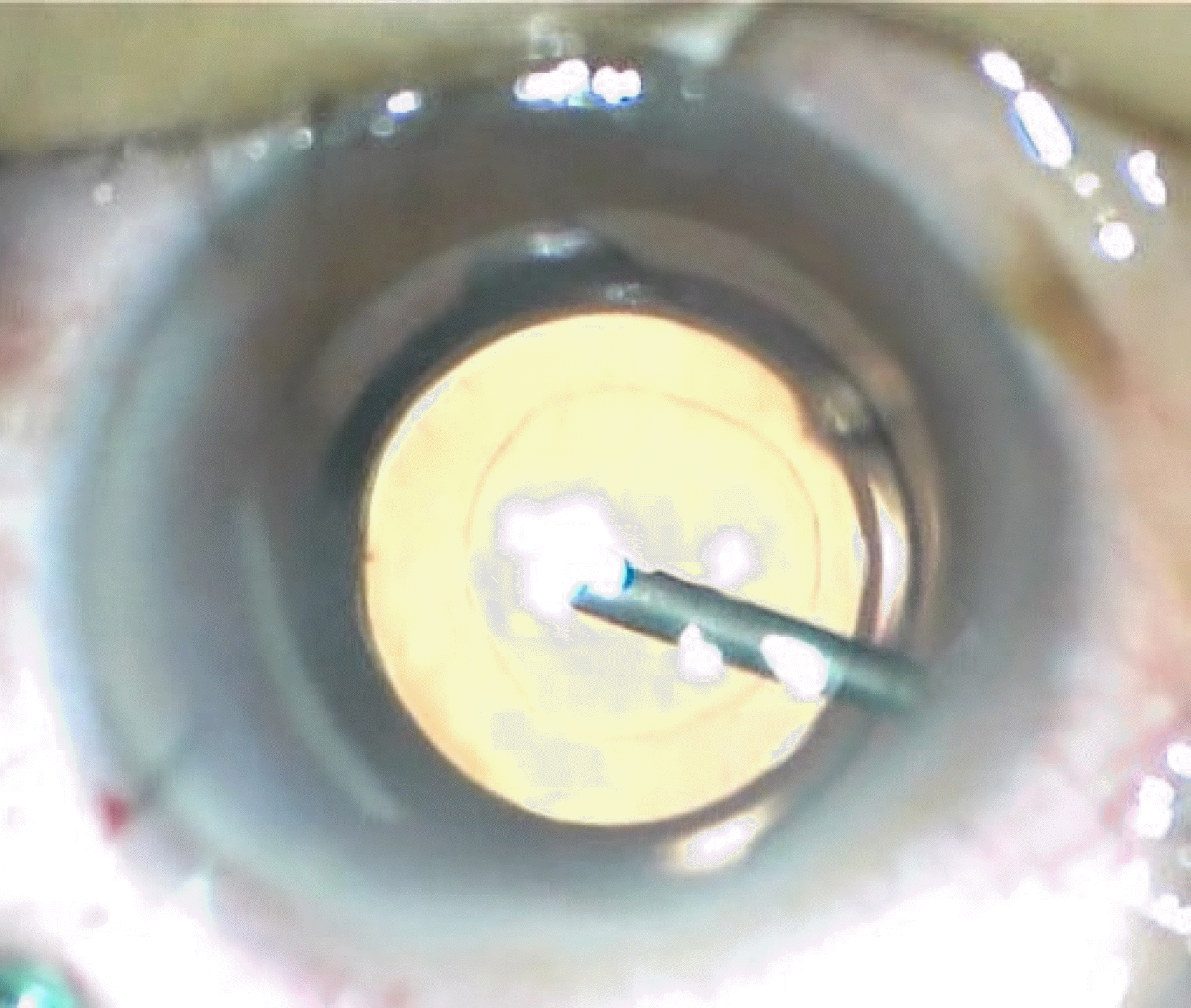1. Hsuan JD, Brown NA, Bron AJ, et al. Posterior subcapsular and nuclear cataract after vitrectomy. J Cataract Refract Surg. 2001; 27:437–44.

2. Melberg NS, Thomas MA. Nuclear sclerotic cataract after abdominal in patients younger than 50 year of age. Ophthalmology. 1995; 102:1466–71.
3. Thompson JT. The role of patient age and intraocular gas use in abdominal progression after vitrectomy for macular holes and epiretinal membranes. Am J Ophthalmol. 2004; 137:250–7.
4. Grusha YO, Masket S, Miller KM. Phacoemulsification and lens implantation after pars plana vitrectomy. Ophthalmology. 1998; 105:287–94.

5. Toda J, Kato S, Oshika T, Sugita G. Posterior capsule opacification after combined cataract surgery and vitrectomy. J Cataract Refract Surg. 2007; 33:104–7.

6. Bhargava R, Kumar P, Phogat H, Chaudhary KP. Neodymium-yt-trium aluminium garnet laser capsulotomy energy levels for abdominal capsule opacification. J Ophthalmic Vis Res. 2015; 10:37–42.
7. Kim JH, Han SB, Lee SJ, Kim MS. Postoperative refractive errors after posterior capsulectomy during combined vitrectomy and abdominal surgery. J Korean Ophthalmol Soc. 2015; 56:709–14.
8. Suzuki Y, Sakuraba T, Mizutani H, et al. Postoperative refractive abdominal after simultaneous vitrectomy and cataract surgery. Ophthalmic Surg Lasers. 2000; 31:271–5.
9. Ohrloff C, Schalnus R, Rothe R, Spitznas M. Role of the posterior capsule in the aqueous-vitreous barrier in aphakic and abdominal eyes. J Cataract Refract Surg. 1990; 16:198–201.
10. Weinreb RN, Wasserstrom JP, Parker W. Neovascular glaucoma following neodymium-YAG laser posterior capsulotomy. Arch Ophthalmol. 1986; 104:730–1.

11. Poliner LS, Christianson DJ, Escoffery RF, et al. Neovascular abdominal after intracapsular and extracapsular cataract extraction in abdominal patients. Am J Ophthalmol. 1985; 100:637–43.
12. Gimbel HV, Neuhann T. Development, advantages, and methods of the continuous circular capsulorhexis technique. J Cataract Refract Surg. 1990; 16:31–7.

13. Gimbel HV. Posterior continuous curvilinear capsulorhexis and optic capture of the intraocular lens to prevent secondary opacification in pediatric cataract surgery. J Cataract Refract Surg. 1997; 23(Suppl 1):652–6.

14. Galand A, van Cauwenberge F, Moosavi J. Posterior capsulorhexis in adult eyes with intact and clear capsules. J Cataract Refract Surg. 1996; 22:458–61.

15. Jeoung JW, Chung H, Yu HG. Factors influencing refractive abdominals after combined phacoemulsification and pars plana abdominal: Results of a prospective study. J Cataract Refract Surg. 2007; 33:108–14.
16. Wagenfeld L, Hermsdorf K, Stemplewitz B, et al. Refractive abdominal in eyes with intraocular gas tamponade – results of a prospective controlled clinical trial. Clinical Ophthalmology. 2017; 11:993–8.
17. Falkner-Radler CI, Benesch T, Binder S. Accuracy of preoperative biometry in vitrectomy combined with cataract surgery for patients with epiretinal membranes and macular holes: results of a prospective controlled clinical trial. J Cataract Refract Surg. 2008; 34:1754–60.
18. Drexler W, Findl O, Menapace R, et al. Partial coherence abdominal: a novel approach to biometry in cataract surgery. Am J Ophthalmol. 1998; 126:524–34.
19. Haigis W, Lege B, Miller N, Schneider B. Comparison of abdominal ultrasound biometry and partial coherence interferometry for intraocular lens calculation according to Haigis. Graefes Arch Clin Exp Ophthalmol. 2000; 238:765–73.
20. Lim HC, Kim KH, Shin MK, et al. Accuracy of predictive refraction in combined vitrectomy-cataract surgery for epiretinal membrane and macular hole. J Korean Ophthalmol Soc. 2015; 56:219–27.

21. Haigis W. Intraocular lens power calculations. Thorofare: Slack Inc.;2003. p. 41–57.
22. Kim DY, Kim MJ, Kim JY, Tchah H. Comparison of formulas for intraocular lens power calculation installed in a partial coherence interferometer. J Korean Ophthalmol Soc. 2009; 50:523–8.

23. Yi CH, Choi SH, Chung ES, Chung TY. Accuracy of the Haigis abdominal based on axial length and anterior chamber depth. J Korean Ophthalmol Soc. 2011; 52:175–81.






 PDF
PDF ePub
ePub Citation
Citation Print
Print


 XML Download
XML Download